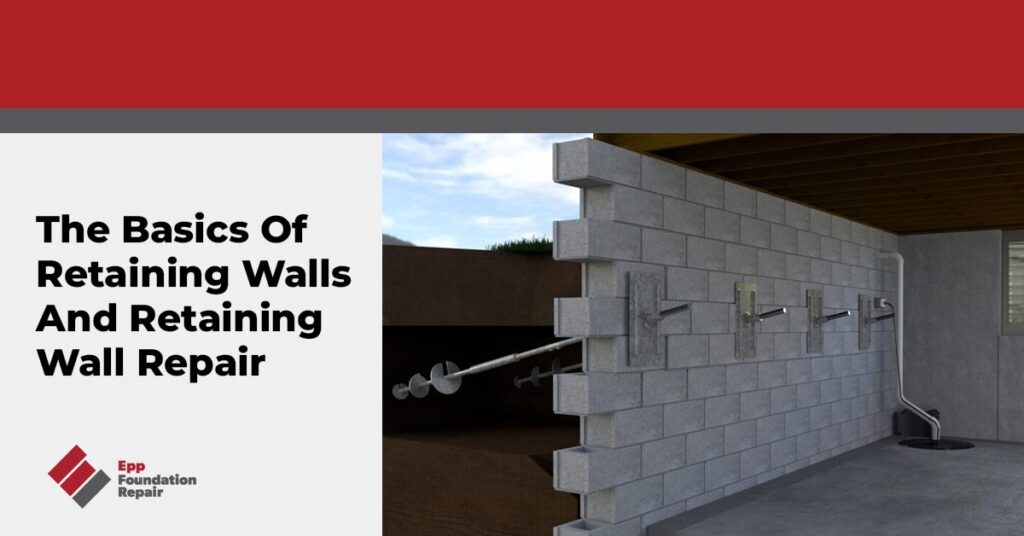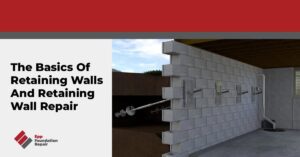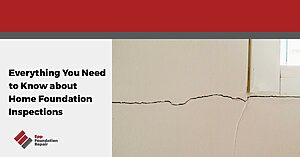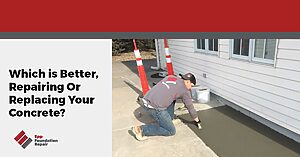Looking for information about retaining wall repair? If so, stick around because that’s what we’re going to talk about in this article. You’ll learn the purpose of retaining walls, why retaining walls fail, repair solutions for a retaining wall, and more.
What Is a Retaining Wall?
A retaining wall is essentially a barrier put up to hold soil back. Retaining walls – which need to be pitched toward the soil being retained – are created using various materials including poured concrete, concrete blocks, brick, and wood.
Why Retaining Walls Fail
Because they’re holding back soil – which weighs a lot – retaining walls need to be able to resist lateral force. If they can’t do this properly, they will fail. The most common causes of retaining wall failures include the following:
- Expansive soil – Expansive soil contains a lot of clay and because of this, it will expand when it soaks up moisture and then shrink when it dries out. Over time, this swelling and shrinking – which is typically seasonal – creates movement in the soil behind the wall. This could eventually cause the retaining wall to fail.
- Erosion-prone soil – Some types of soil are prone to erosion and if this happens, it could create voids behind the wall.
- Hydrostatic pressure – Poor drainage behind a retaining wall will eventually lead to the build up of hydrostatic pressure, which will exert tremendous force against the wall. If it isn’t relieved, the wall will start to bow outward and fail.
- No weep holes – Drainage behind a retaining wall are essential so that hydrostatic pressure can’t build up. A retaining wall built without weep holes will fail eventually.
- No drain tile system – A drain tile system is another essential feature that will prevent hydrostatic pressure from building up. For more information about how a drain tile system works, see What Is Drain Tile? The same principle applies whether it’s a drain tile system around a home’s foundation or behind a retaining wall.
- There’s either no footing or there’s a problem with the footing – A properly built footing is necessary for a structurally sound retaining wall.
- No rebar for reinforcement – The addition of rebar will strengthen a retaining wall.
- There’s something heavy on the ground above and behind the wall – This might be a large truck, a dumpster, or something else. Whatever it is, if it’s heavy, it will exert lateral pressure on the retaining wall.
- The soil under the retaining wall’s foundation wasn’t adequately compacted – Before you begin building a foundation, you need to adequately compact the soil. If this isn’t done, the structure could sink into the ground after it’s built.
- Poor construction – It happens.
Any of the above problems could cause a retaining wall to fail. Fortunately, retaining walls don’t need to be torn down and rebuilt. They can be repaired.
Retaining Wall Repair Methods
So, does a failed retaining wall need to be knocked down and rebuilt, or can it be repaired? The good news is that in most cases, we can use either helical anchors or wall plate anchors to repair and stabilize a bowed or tipped retaining wall. Often, several anchors are necessary to properly stabilize a failing retaining wall.
Helical anchors (tiebacks)
Helical anchors look something like giant corkscrews and are used to stabilize both failing retaining walls and failing foundation walls. They’re drilled through the wall and deep into the soil behind the wall. They essentially anchor the failing wall to the soil. Helical anchors can even pull the wall back into place.
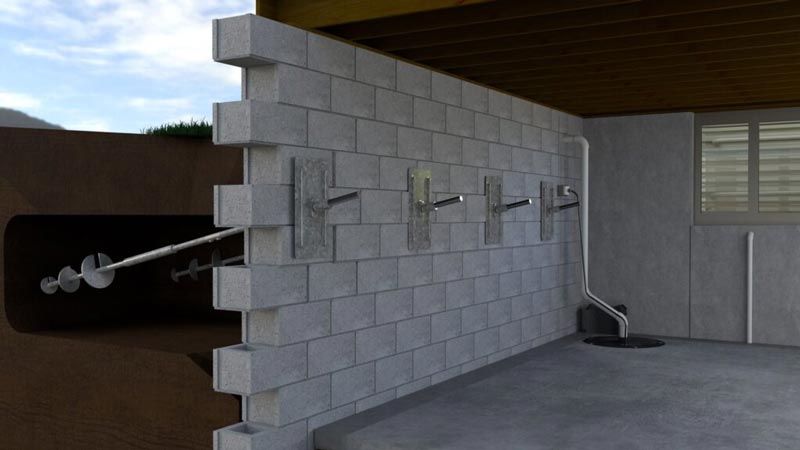
Wall plate anchors
Wall plate anchors are another repair method for stabilizing a failing retaining wall. A plate is attached to the retaining wall and then it’s connected to an anchor that has been placed in the soil on the other side of the wall. Wall plate anchors are used to stabilize both retaining walls and foundation walls.
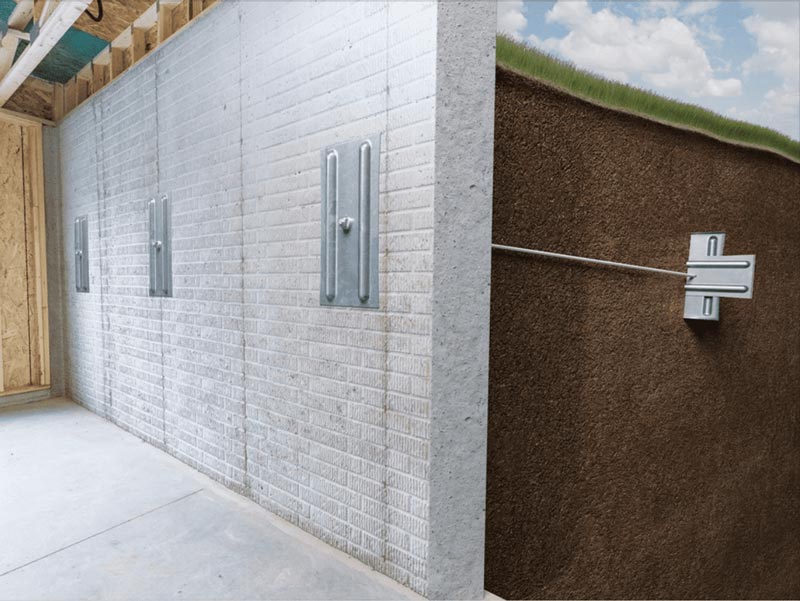
Should I Repair Or Replace My Retaining Wall?
Most of the time, it’s less expensive to repair the wall than to tear it down and replace it. If the basic construction of the retaining wall is sound, and the wall can be fixed, it should be fixed rather than replaced.
If the wall wasn’t built properly or it’s extremely damaged, repair solutions like helical piers and wall plate anchors could actually end up destroying the wall. A foundation repair contractor will know the best course of action after inspecting the wall.
How To Prevent Retaining Wall Failures
Preventing a retaining wall from failing is always easier than repairing one. Here are some ways to prevent retaining wall failures:
- Make sure there’s good drainage behind the wall. Poor drainage can cause hydrostatic pressure to build up in the soil and push against the retaining wall. If the pressure isn’t relieved, the wall will eventually start to bow outward. Hydrostatic pressure can be prevented by proper drainage. This includes installing a drain tile system and/or weep holes.
- Make sure the retaining wall has a good foundation and that the soil was adequately compacted before construction begins. Soil needs to be properly tamped down before you build anything on top of it. If this isn’t done, the structure will sink into the ground after it’s built.
- Hire a reputable contractor to build the retaining wall.
If you think you might need retaining wall repair, contact us today to schedule an evaluation. We serve areas in four states: Nebraska, Iowa, Kansas, and Missouri.

